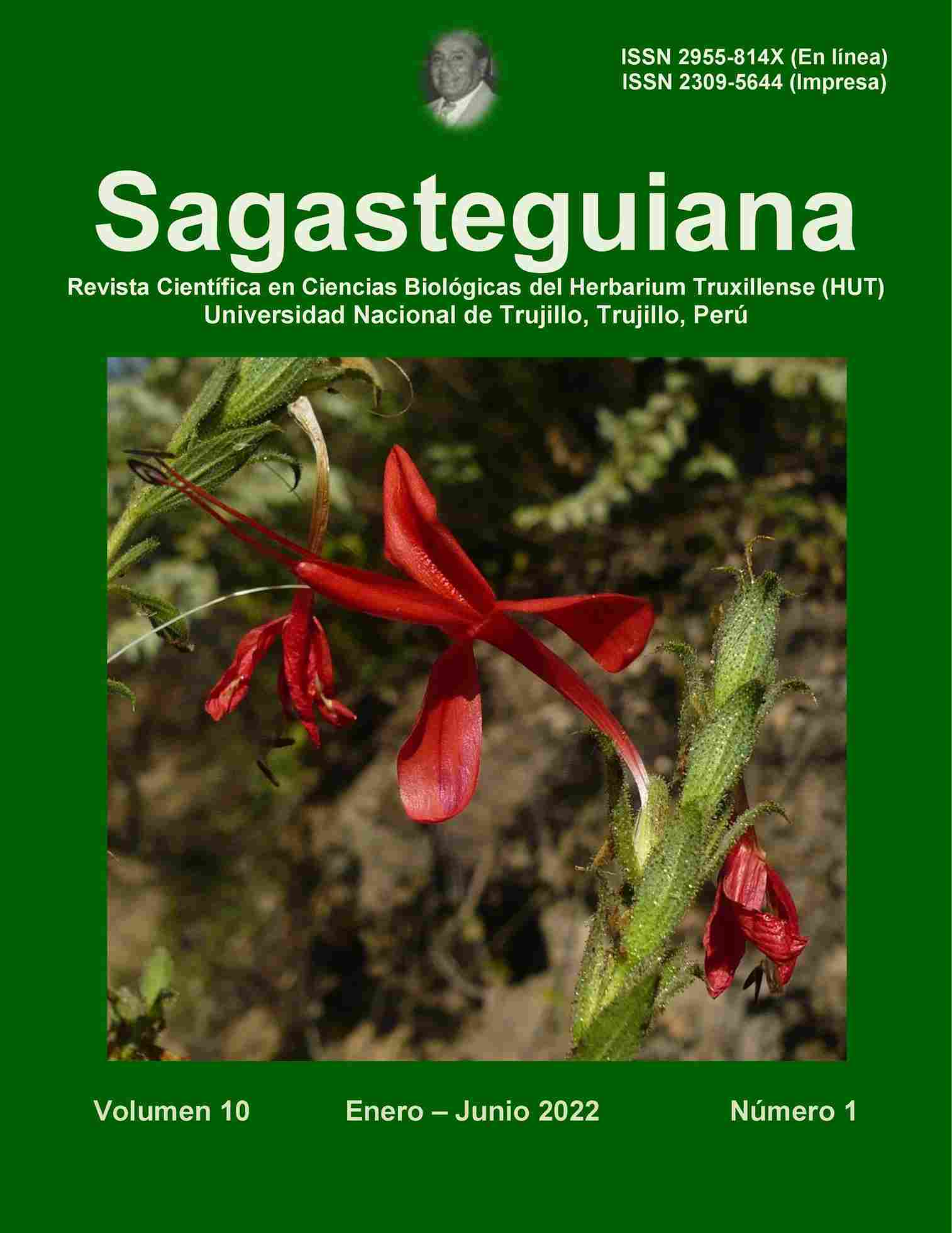BIOTECNOLOGÍA VEGETAL: EVOLUCIÓN Y PERSPECTIVAS
Palabras clave:
Propagación in vitro, biotecnología de plantas, mejoramiento vegetalResumen
La biotecnologia vegetal ha alcanzado un desarrollo considerable que está permitiendo una agricultura de alto nivel tecnológico. Estos avances merecen ser registrados para conocer cuanto se ha avanzado y nos permitan hacer nuevas propuestas en favor de la agricultura y la humanidad. En esta nota científica se hace una breve reseña histórica y las posibles áreas a seguir investigando en cultivos de interés económico.
Citas
Altman, A. & P. Hasegawa. 2012. Introduction to plant biotechnology: basic aspects and agricultural implications. In: Altman A, Hasegawa PM (eds) Plant biotechnology and agriculture: prospects for the 21st century. Elsevier/Academic Press, London. 624 p.
Ball, E. 1946. Development in sterile culture of stems tips and subjacent regions of Tropaeolum malus L. and of Lupinus albus L. Am J Bot 33:301–318.
Cocking, E. 1960. A method for the isolation of plant protoplasts and vacuoles. Nature 187:927–929.
De Framond, A.; K. Barton & M. Chilton. 1983. MINI-Ti: a new vector strategy for plant genetic engineering. Bio/Technology 1:262–269.
Gasser, C. & Fraley. 1989. Genetically engineering plants for crop improvement. Science 244:1293–1299-
Gautheret, R.J. 1934. Culture du tissus cambial. Comptes Rendus Hebdomadaires des S’eances de l’Acad’emie des Sciences 198: 2195–2196.
Guha, S. & S. Maheshwari. 1964. In vitro production of embryos from anthers of Datura. Nature 204 (4957): 497
Kaul, B. & E. Staba.1965. Visnagin: biosynthesis and isolation from Ammi visnagi suspension cultures. Science 150:1731–1732.
Komamine, A.; R. Kawahara; M. Matsumoto; S. Sunabori; T. Toya; A. Fujiwara; M. Tsukahara; J. Smith; M. Ito; H. Fukuda; K. Nomura & T. Fujimura. 1992. Mechanisms of somatic embryogenesis in cell cultures: physiology, biochemistry, and molecular biology. In Vitro Cell Dev Biol Plant 28:11–14
Morel, G. 1960. Producing virus-free cymbidium. Am Orchid Soc Bull 29:495-497.
Murashige, T. 1974. Plant propagation through tissue culture. Annu Rev Plant Physiol 25:135-166.
Nitsch, J. & C. Nitsch. 1969. Haploid plants from pollen grains. Science 163:85–87.
Nob’ecourt, P. 1939. Sur les radicelles naissant des cultures de tissus v’eg’etaux. Comptes Rendus Des S’eances de la Soci’et’e de Biologie et de ses Filiales 130:1271–1272
Noguchi, M.; T. Matsumoto; Y. Hirata; K. Yamamoto; A. Katsuyama; A. Kato; S. Azechi & K. Kato. 1977. Improvement of the growth rate of plant cell cultures. In: Barz W., Reinhard E., Zenk M. (eds) Plant tissue culture and its biotechnological application. Springer-Verlag, Berlin, pp 85–94.
Reinert, J. 1959. Uber die Kontrolle der Morphogenese und die Induktion von Adventiv embryonen an Gewebekulturen aus Karotten. Planta 53:318–333.
Skoog, F. & C. Miller. 1957. Chemical regulation of growth and organ formation in plant tissue cultures in vitro. Symp Soc Exp Biol 11: 118–131
White, P. 1934. Potentially unlimited growth of excised tomato root tips in a liquid medium. Plant Physiol 9:585–600.
Zambryski, P.; H. Joos; C. Genetello; J. Leemans; M. Van Montagu & J. Schell. 1983. Ti plasmid vector for the introduction of DNA into plant cells without alteration of their normal regeneration capacity. EMBO J 2: 2143–2150.
Descargas
Publicado
Cómo citar
Número
Sección
Licencia
Derechos de autor 2022 Julio Chico Ruiz, Alfredo León Alayo

Esta obra está bajo una licencia internacional Creative Commons Atribución 4.0.
LOS AUTORES CONSERVAN SUS DERECHOS:
- Los autores/as conservan sus derechos de marca y patente, y también sobre cualquier proceso o procedimiento descrito en el artículo.
- Los autores/as retienen el derecho de compartir, copiar, distribuir, ejecutar y comunicar públicamente el artículo publicado en la revista Sagasteguiana (Ejemplo: colocarlo en un repositorio institucional o publicarlo en un libro), siempre que se indique la publicación inicial en esta revista.
- Los autores/as conservan el derecho a hacer una posterior publicación de su trabajo, de utilizar el artículo o cualquier parte de aquel (Ejemplo: compilación de sus trabajos, notas para conferencias, tesis, o para un libro), siempre que indiquen su publicación inicial en Sagasteguiana (autores del trabajo, revista, volumen, número y fecha).



